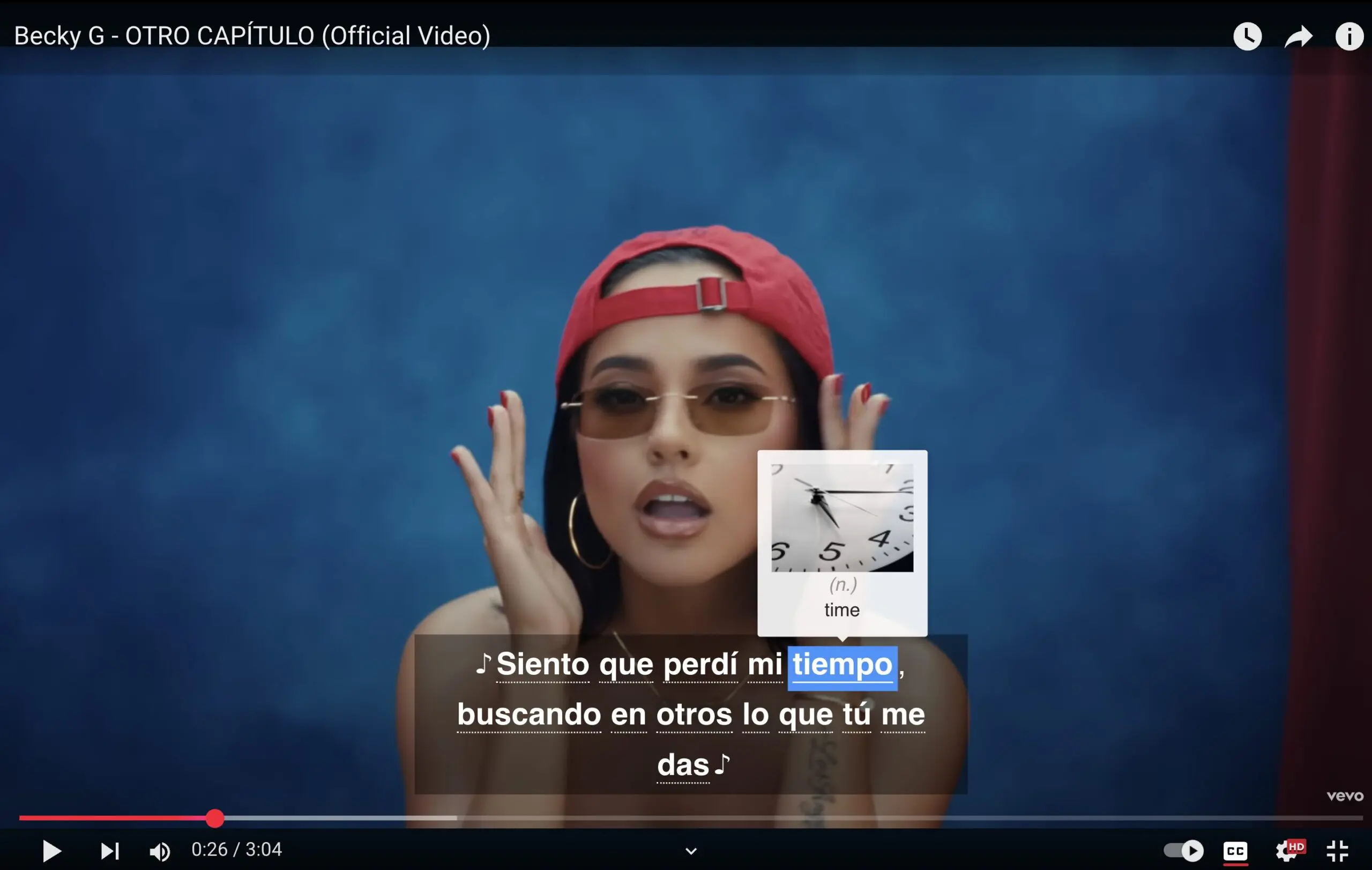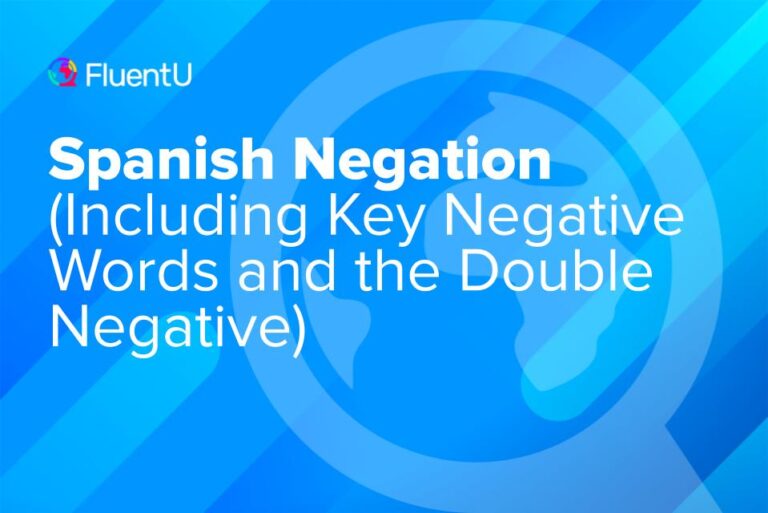How to Pronounce the Spanish Alphabet

If you’re reading this, that means you have at least a passing mastery of one of the most foul spelling systems ever conceived—that of the English language, with strange and nonsensical spellings like “through,” “knee” and “indict.”
After learning English, reading and writing in Spanish is going to be a relative breeze.
Spanish is written with the same 26 Latin letters as we use in the English alphabet, plus Ñ for a total of 27 letters.
After you read this post, you’ll be able to identify and pronounce each of the 27 Spanish letters, and you’ll be given detailed instructions on how to say them, with examples and notes for each letter.
Download: This blog post is available as a convenient and portable PDF that you can take anywhere. Click here to get a copy. (Download)
The 27 Letters of the Spanish Alphabet
The Spanish alphabet, known as el alfabeto or el abecedario in Spanish, only has one letter that the English alphabet doesn’t contain: That is the ñ, which is pronounced like the Y in the English word “canyon.”
There are also some Spanish letters that perform double duty in terms of pronunciation. The G, for example, can sound like the G in “gate” or the H in “health.” There are also regional differences. The Z can sound like the TH in “theta” or the S in “sierra” depending on where it’s being spoken.
How to Pronounce Spanish Letters
The “official” names for the letters below are from the Royal Spanish Academy, which is attempting to standardize the letter names across all Spanish-speaking regions for the sake of communicative simplicity. When there are other names that you’ll frequently hear, those are given here as well.
Note that all Spanish letters are feminine.
| Letter | Pronunciation of name | IPA pronunciation | Sound in English |
|---|---|---|---|
| Aaá | a | /a/ | Father |
| Bb | be | /b/ | Boy |
| Cc | ce | /k/ and /θ/ or /s/ depending on region | Scat, chunk, thump or Sarah |
| Dd | de | /d/ | Day |
| Eeé | e | /e/ | May |
| Ff | efe | /f/ | Fall |
| Gg | ge | /g/ and /x/ | Girl or hello |
| Hh | hache | Silent (except after c) | Silent or chunk |
| Iií | i | /i/ | Beep |
| Jj | jota | /h/ or /x/ | Hot |
| Kk | ka | /k/ | Cat |
| Ll | ele | /l/ and as a double-l /ʎ/ or /ʝ/ | Love, you |
| Mm | eme | /m/ | Mary |
| Nn | ene | /n/ | Nancy |
| Ññ | eñe | /ɲ/ | Canyon |
| Ooó | o | /o/ | No |
| Pp | pe | /p/ | Pay |
| cu | /k/ | Cool | |
| Rr | ere | /ɾ/ and /r/ | [None] |
| Ss | ese | /s/ | Sally |
| Tt | te | /t/ | Taylor |
| Uuúü | u | /u/ | Food |
| Vv | uve | /b/ | Bay |
| Ww | uve doble | /gw/ and /b/ | Whiskey or bay |
| Xx | equis | /ks/, /x/ and /s/ | Taxi, hot or say |
| Yy | ye | [j] or /i/ as a vowel and [j] or [ʝ] as a consonant, depending on the region | Hey or equal |
| Zz | zeta | /θ/ or /s/ depending on the region | Theta or sit |
Notes on Letters in Spanish
As in any language, there are some specific situations in which letters change sounds or have more than one option, so you’ll want to read these detailed notes about each of the Spanish letters.
Aaá
Name: a
This back open vowel is the first vowel in a Spanish word you probably already know: amigo (friend).
Bb
Name: (officially) be, (commonly) be alta, (less frequently) be larga or be grande
At the beginning of a word, or after L, M or N, this letter sounds pretty much the same in Spanish as in English (like the B in “boy”), but a little less plosive (softer). In other situations, it may sound a little bit closer to the English V, but not much.
The Spanish B is pronounced exactly the same as the Spanish V—although occasionally some people, even native speakers, will claim otherwise. Linguists will tell you this doesn’t make any difference in actual speech patterns, however.
Just think of the Spanish B and the V as two letters for the same sound. This conflation should give you some clue as to why native Spanish speakers have a terrible time understanding and pronouncing the English V as in “Victor.”
Cc
Name: ce
Before I or E, it’s pronounced like the TH in the English “thing” in central and northern Spain. This phenomenon is called ceceo and also exists with the letter Z. Elsewhere, however, it’s pronounced like the S in “Sarah” before these vowels.
Before H, as in English, it becomes like the CH in “chunk.” Previously, this CH was itself considered a separate letter and indices and libraries were even organized as such. These are now considered two separate letters that simply combine to make this sound.
Anywhere else, the letter is pronounced pretty much like the English letter K (but less plosive, or softer), like the C in “scat.”
Dd
Name: de
At the beginning of a word or after L, M, or N, this sounds like the English D in “dog.”
However, in other situations, it sounds like the TH in “this.” As you’re learning Spanish, you’ll particularly notice this second pronunciation in past participles ending in -ado and -ido such as hablado (spoken).
To get a sense of both D pronunciations at work, try listening closely to dedo (finger), which sounds like “DAY-thow.”
Eeé
Name: e
This is a bit like the AY in the English “day,” but purer. It’s just one short vowel sound.
Also note that it’s always pronounced, unlike the English E that is silent that sits at the end of many words. Thus, the best thing that Mexicans have ever done to chocolate and to chicken, and to the world, is called mole and is pronounced MO-lay.
Ff
Name: efe
This is the same as the English F. Consider it a total freebie.
Gg
Name: ge
Before I and E, it’s pronounced like our English H—the aspirated sound that starts the word “Harry.”
Otherwise, though, it sounds like the English G sound in “gag.” Thus we have gente (people) but also gato (cat).
Now, here’s where things get tricky. What happens to those words that have a “soft” /g/ sound like gato, right before an /e/ or /i/ sound? Easy—we add a mute U between the two letters! Take these examples:
And what about the words where all three sounds (/gue/, /gui/) are pronounced? Well, we just ‘unmute’ the U by adding an umlaut (diéresis) to it:
Hh
Name: hache
Except when following a C, this letter is always silent. Always!
This seems very easy, but English speakers have a tendency to pronounce an aspirated H sound anyhow as they’re learning Spanish. Consider yourself warned.
Iií
Name: i
This vowel is like the EE in “beep.”
Rarely, will you hear the I called by its corresponding old name i latina (the Latin I), to contrast it from Y, which has been frequently called i griega (the Greek Y).
Jj
Name: jota
J can vary regionally from the aspirated H sound like in the English “help,” to an H sound with a lot of hacking in the middle, which English doesn’t have, unless you count a Scotsman saying the last consonant in loch.
A Spanish example is joven (young), which you can hear pronounced by people from various countries here. The Spaniard goes much more for /x/ and the North and South Americans go for /h/.
Historically, the J was confused with the I for quite some time in the Latin alphabet, and was simply a flowery way to write the same sound. In Spanish, it can sound the same as a G that is followed by an I or an E.
Kk
Name: ka
This is only used in loanwords and foreign words, and the sound is the same as the English K but less aspirated, like in the English word “skill.”
Ll
Name: ele
L is pronounced sort of like “Larry” but the point of contact of the tongue is slightly higher towards the roof of the mouth.
When there’s a double L, the sound changes and becomes like the Y in “yesterday.” However, in Argentina and Uruguay it gets a bit of the beautiful ZSH, or /ʒ/, sound, like the S in “pleasure.”
Mm
Name: eme
This is pronounced the same as in English.
Nn
Name: ene
This is also pronounced the same as in English.
Ññ
Name: eñe
This is the only letter in Spanish that doesn’t exist in the English alphabet, and there’s even a separate key for it on Spanish keyboards.
Even if you haven’t studied Spanish at all, you’ve probably seen it and maybe even have a sense of how it’s pronounced: like the start of the second syllable in the English “canyon.”
Common examples in Spanish include niño (child) and baño (bath).
Ooó
Name: o
This is pronounced like the English O in but a bit shorter, not made into a diphthong. Those who are purists for pronunciation might compare how Spanish speakers say the word no (no) to our English version, and try to hit the Spanish version. But if not, don’t sweat it—you’ll obviously be understood just fine either way.
Pp
Name: pe
This is similar to the English P as in “perfection,” but less plosive (or less expelled air).
Name: cu
As is usually the case in English, the Spanish Q is always followed by a mute U and either E or I after (QUE and QUI are the only possible combinations for this letter), and its sound is pretty much the same as a K.
Rr
Name: ere
The Spanish R is similar to the English R, but more in the front of the mouth, with a single trill. If you see a double RR (named erre), it gets a bit more trill.
This video has an absolutely lovely demonstration of achieving this trill, along with drawings of where your tongue should go:
When you think you’re getting close, try comparing the single R to the double RR sounds by listening to the words pero (but) and perro (dog) at those links. Can you hear it, and make the distinction yourself?
Ss
Name: ese
This is pronounced just like in English.
Tt
Name: te
This is just a bit lighter and less plosive than the English T, but otherwise the same.
Uuúü
Name: u
This vowel is similar to the OO in the English “food,” but a bit shorter.
Vv
Name: (officially) uve; (commonly) ve, ve baja; (less frequently) ve corta, ve pequeña
This is pronounced the same as the Spanish B, so see above for how to use it. To distinguish it from the B, you should spell it by using the most common uve or ve baja.
Ww
Name: (officially) uve doble; (sometimes) ve doble or doble ve
This letter is not used in true Spanish words but rather in loanwords from languages like English or German. For example, the word whisky. It may also be spelled whiskey (as in English), wiski, and, in the hilarious and rather wishful recommendation of the official RAE dictionary: güisqui.
Xx
Name: equis
The most common pronunciation for this is /ks/, as in the word taxi—the same in Spanish and English.
Note, however, the contrast of Mexico, in which the X maintains a similar sound to the Spanish J—it’s pronounced me-HEE-ko.
Yy
Name: (officially) ye, (commonly) i griega
This letter is most commonly called i griega (the Greek I), reflecting its original use in Spanish for loanwords from Greek. It’s now officially known as ye so as to fit in with the names of other Spanish consonants.
As a consonant, it’s pronounced the same as a double LL. One example is the very common ya (translates as “already,” among other things). As a vowel, the Spanish Y sounds like the I, and is usually part of a diphthong, as in hay (there is, there are) and soy (I am).
Zz
Name: zeta
This is pronounced similarly to the first numbered pronunciation for C, meaning that it can change from an S to a lisped TH if you’re in central or northern Spain.
FluentU takes authentic videos—like music videos, movie trailers, news and inspiring talks—and turns them into personalized language learning lessons.
You can try FluentU for free for 2 weeks. Check out the website or download the iOS app or Android app.
P.S. Click here to take advantage of our current sale! (Expires at the end of this month.)

What Makes the Spanish Alphabet Easy?
In contrast to English, Spanish doesn’t have such a haphazard relationship between how words are spelled and how they’re pronounced. Except for a few exceptions, pronunciation is very regular in Spanish.
Because of this, it’s much easier to learn the Spanish alphabet than the English one! In elementary schools, Spanish-speaking children are intentionally given the task of spelling words that they’ll never, ever have heard before in order to test their abilities to apply Spanish’s nearly perfect spelling system, and it works.
If you want some extra practice with memorizing the Spanish alphabet, YouTube is full of plenty of songs like this one to help you learn it faster!
FAQs About the Spanish Alphabet
How many letters does the Spanish alphabet have?
The Spanish alphabet has 27 letters. In 2010, the Spanish alphabet underwent a reform, eliminating the separate status of ch and ll as individual letters. Instead, ch and ll became digraphs. This streamlined the alphabet to its core 27 letters.
What is the Ñ called in Spanish?
In Spanish, the letter Ñ is called eñe. It is a distinct letter of the Spanish alphabet and represents a unique phoneme. The Ñ sound doesn’t exist in English, making it a notable feature of the Spanish language. It’s commonly found in words like niño (child) and mañana (tomorrow).
How to say “the alphabet” in Spanish?
To say “the alphabet” in Spanish, you would use the phrase el alfabeto. or el abecedario. For example, you might say:
Estoy aprendiendo el alfabeto. (I am learning the alphabet.)
Or:
El abecedario en español tiene veintisiete letras. (The Spanish alphabet has 27 letters.)
If you’ve gotten this far, you’re now a complete master of the Spanish alphabet—probably more so than any of us will ever be for the English alphabet.
True language nerds with a good level of Spanish can read more about the Royal Spanish Academy’s plans for the alphabet here. But my recommendation is to just enjoy the language’s relatively carefree spelling system.
Spanish is going to throw a lot of crazy curveballs at you in the learning process, but the alphabet isn’t one of them.
Download: This blog post is available as a convenient and portable PDF that you can take anywhere. Click here to get a copy. (Download)
And One More Thing…
If you want to learn Spanish with authentic materials but need a little extra support, then you need to know about FluentU.
FluentU lets you consume the same content as native Spanish speakers, but with tools to make it easier to pick up the language while you watch. You’ll learn Spanish as it’s actually spoken by real people, unlike programs that use scripted content.
You can bring our learning tools directly to YouTube or Netflix with the FluentU Chrome Extension, or check out our curated video library full of clips that cover a wide range of topics, as you can see here:
FluentU brings native videos within reach with interactive subtitles. You can tap on any word to instantly see its meaning, an image, and its audio pronunciation. Click on the word for additional examples and to add it to your flaschards.
To reinforce what you've learned, you'll complete engaging exercises and see more examples of the key words from the video. FluentU keeps track of the vocab you’re learning, and gives you extra practice with difficult words.
Start using the FluentU website on your computer or tablet or, better yet, download the FluentU app from the iTunes or Google Play store. Click here to take advantage of our current sale! (Expires at the end of this month.)












